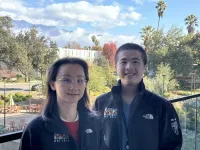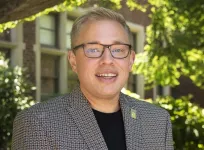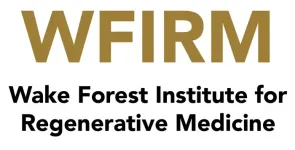The science behind mindfulness: How one University of Ottawa professor embraced it for the benefit of her students
Tapping into mindfulness to understand the neuroscience and physiological basis of the brain and training its networks to combat anxiety and life’s stressors
2024-01-26
(Press-News.org) Understanding the neuroscience and physiological basis of the brain and training its networks to combat anxiety and life’s stressors
Professor Andra Smith, from the School of Psychology at the Faculty of Social Sciences, has combined her research and her personal experience with mindfulness to teach the course Neuroscience of Mindfulness: Neurons to Wellness. Her interest in neuroscience explores how to optimize cognitive processes behind decision-making, organizing behaviour, setting goals while taking the necessary steps to accomplish them without distractions. Mindfulness has allowed her students to achieve these skills while keeping stress at bay.
Professor Smith recently published WHO KNEW! Neuroscience and Mindfulness take on Stress in the Real World, and WIN! documenting her work, and we asked her about her embracing of mindfulness and how it impacted her students.
Question: What inspired you to explore the use of mindfulness to attack the stress you saw in your students?
Andra Smith: “During Covid, I didn’t have the usual hands-on connection with students and noticed they were battling high stress levels and anxiety was impacting their performance. I wanted to give them tools to handle some of these stressors and their fear of the future. I had gained so much from my own mindfulness training that I knew they would benefit from learning why and how it works.”
Q: Scientifically speaking, what kind of research did you lead to find evidence behind the effectiveness of mindfulness?
AS: “I performed two fMRI studies with mindfulness as an intervention, studying breast cancer patients with neuropathic pain and musicians suffering from performance anxiety. In both studies, we found significant changes in brain structure and function. Currently, we are working on an imaging study with pediatric concussion, and we hypothesize that mindfulness can help with emotion regulation and quality of life issues post-injury.”
Q: Mindfulness comes with skepticism for many; how did you view it as you moved forward in using it?
AS: “This required understanding the brain and how mindfulness worked from a neuroscience lens. I was skeptical until I learned why and how mindfulness worked in the brain: the stress response; the evolution of our brains; the attention networks; the nervous systems and their interactions; the way in which stress hijacks our prefrontal cortex and how to counter that. Those were the academic and scientific features, but personal life experiences also solidified my passion for mindfulness training. I used my mindfulness training during my mother’s illness and final passing, being with it despite how sad it was. It was a lightbulb moment that brought the science and experience together, confirming its power. I wanted to give this to my students. They embraced it, used it, and loved how it changed their day-to-day lives.”
Q: How did your students respond and what was ultimately achieved by introducing mindfulness to their curriculum/routine?
AS: “I provided mindfulness practices at the start and end of class plus suggested homework exercises. They did the homework and enjoyed it! One exercise was to have a mindful conversation, listening to listen, not to respond. This was eye-opening for students because they realized that they don’t really listen in a conversation without thinking about what their answer will be. It is a gift to give someone your full attention, and they felt it with this exercise and appreciated their relationships more afterwards. The consensus from the course was that the students had tools to deal with stress and learned that the stress did not have to control them; they could be in the driver’s seat and this made them more productive. For a professor it doesn’t get any better than hearing a student say that they implemented what they learned in class and that it enriched their lives.”
Q: How do you suggest people take a first step towards engaging in the practice of mindfulness for their benefit?
AS: “Gradually putting together several short practices that feel good is a good way to start. Mindfulness is a variety of practices so you can pick and choose what you like. It is really about attention and training those networks in the brain that allow us to stay focused and out of the pre-living and re-living narratives that we run so often. My book walks the reader through the whole course we did so that is a great place to start. I would be happy to help anyone who wants to try it. I would add that I do not recommend learning on your own if you have had trauma or suffer with significant mental health issues. It is not a replacement for treatment or therapy. It is a supplement.”
“Being aware of how stress impacts our physiology can give us a jump start on countering its potential negative effects. If we can be in tune with our physiology, it gives us all kinds of information and cues that we then have control over. Knowledge is power. We need to know our brain, as it controls everything we do, good and bad. Mindfulness can help us with this.”
END
ELSE PRESS RELEASES FROM THIS DATE:
2024-01-26
A recently discovered solar system with six confirmed exoplanets and a possible seventh is boosting astronomers’ knowledge of planet formation and evolution. Relying on a globe-spanning arsenal of observatories and instruments, a team led by researchers at the University of California, Irvine has compiled the most precise measurements yet of the exoplanets’ masses, orbital properties and atmospheric characteristics.
In a paper published today in The Astronomical Journal, the researchers share ...
2024-01-26
If life ever existed on Mars, the Perseverance rover’s verification of lake sediments at the base of the Jezero crater reinforces the hope that traces might be found in the crater.
In new research published in the journal Science Advances, a team led by UCLA and The University of Oslo shows that at some point, the crater filled with water, depositing layers of sediments on the crater floor. The lake subsequently shrank and sediments carried by the river that fed it formed an enormous delta. As the lake dissipated over time, the sediments in the crater were eroded, forming ...
2024-01-26
As people age or become ill, their immune systems can become exhausted and less capable of fighting off viruses such as the flu or COVID-19. In a new mouse study funded in part by the National Institutes of Health and published in Science Advances, researchers from the USC Stem Cell lab of Rong Lu describe how specific gene activity could potentially enhance immune cell production.
“Hematopoietic stem cells, or HSCs, produce blood and immune cells, but not all HSCs are equally productive,” said the study’s corresponding author Rong Lu, PhD, ...
2024-01-26
They are among the most productive and biodiverse areas of the world's oceans: coastal upwelling regions along the eastern boundaries of the Atlantic and Pacific Oceans. There, equatorward winds cause near-surface water to move away from the coast. This brings cold, nutrient-rich water from the depths to the surface, inducing the growth of phytoplankton and providing the basis for a rich marine ecosystem in these regions.
In some tropical regions, however, productivity is high even when the upwelling favourable winds are ...
2024-01-26
JANUARY 23, 2024, NEW YORK – A Ludwig Cancer Research study has found that the circadian clock—which synchronizes physiological and cellular activities with the day-night cycle and is generally thought to be tumor suppressive—in fact has a contextually variable role in cancer.
“A lot of evidence suggests that the biological clock is broken in cancer cells, so we expected its disruption would fuel tumor growth in mouse models of melanoma,” said Chi Van Dang, scientific director of the Ludwig Institute for Cancer Research, who led the study with Research Associate Xue Zhang. “But, contrary to our expectations, ...
2024-01-26
An assistant professor and consumer economics specialist with University of Tennessee Extension has been recognized by the Association for Financial Counseling and Planning Education (AFCPE) as the organization’s Educator of the Year for 2023. Christopher Sneed was among ten individuals, organizations, special projects and initiatives expanding access to personal finance resources and education across the country recognized as part of the 2023 AFCPE Awards late last year.
The AFCPE’s Mary Ellen Edmondson Educator of the Year Award honors ...
2024-01-26
Boston, MA – A new review of available evidence led by researchers at the Harvard Pilgrim Health Care Institute suggests that female reproductive characteristics may be overlooked as risk factors that contribute to later metabolic dysfunction.
The review, “Reproductive risk factors across the female lifecourse and later metabolic health,” was published in the January 26 edition of Cell Metabolism.
Metabolic health is characterized by optimal blood glucose, lipids, blood pressure, and body fat. Alterations in these characteristics may lead to the development of type 2 diabetes or cardiovascular disease.
“Our ...
2024-01-26
In the retinas of human eyes, the cones are photoreceptor cells responsible for color vision, daylight vision, and the perception of small details. As vision scientists from the Division of Experimental Retinal Therapies at the University of Pennsylvania School of Veterinary Medicine, Gustavo D. Aguirre and William A. Beltran have been working for decades to identify the basis of inherited retinal diseases. They previously showed they could recover missing cone function by reintroducing a copy of the normal gene in photoreceptor cells.
Both ...
2024-01-26
WINSTON-SALEM, NC, January 26, 2024 – The Wake Forest Institute for Regenerative Medicine (WFIRM) is the recipient of an inaugural U.S. National Science Foundation (NSF) Engines Program award. The NSF Engines: Piedmont Triad Regenerative Medicine Engine is a regional project that provides an innovation ecosystem to stimulate workforce development, job creation, and economic growth through the development of technologies that benefit the emerging industry. The Piedmont Triad Regenerative Medicine Engine team is led by WFIRM, and includes Forsyth Technical Community College (FTCC), North Carolina Agricultural and Technical State University (N.C. A&T), the RegenMed Development ...
2024-01-26
Lithium-ion batteries stand out as one of the most prevalent rechargeable battery technologies in the present era. Within these batteries, lithium-cobalt oxides (LiCoO2) are widely used as the materials for positive electrodes or cathodes (the conductors through which electric current either enters or exits a substance). The cathode plays a pivotal role in lithium-ion batteries and influences their capacity, performance over many charge-discharge cycles, and ability to manage heat.
One major issue leading to the deterioration of these batteries is the creation of hydrogen through the splitting of water. Therefore, gaining insights into how hydrogen builds ...
LAST 30 PRESS RELEASES:
[Press-News.org] The science behind mindfulness: How one University of Ottawa professor embraced it for the benefit of her students
Tapping into mindfulness to understand the neuroscience and physiological basis of the brain and training its networks to combat anxiety and life’s stressors






